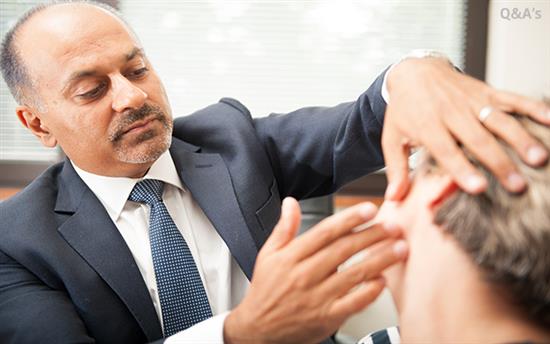
Mr. Chana performs many facelift procedures in London every year, but how much do you know about treatment? It is possible to learn how to understand and understand those who will not be able to treat these problems.
Who is suitable for facelift surgery?
Facelift surgery can be an appropriate option for a variety of patients. The ages that patients usually deem worthy of facelift surgery are most often seen in patients aged 40 and upwards. However, this may be different for patients who may have lost a lot of weight or prematurely, resulting in older looking than their years. In most cases facelift surgery under the age of 30's is highly unusual.
What signs of age may make facelift surgery an appropriate treatment option?
Typically, patients look to tighten and lift the skin on the face of facial rejuvenation surgery, and the facelift in its various forms is the best procedure to achieve this. The first signs of aging in the face of the patient and the patient, for the sake of the patient's facelift surgery, are usually briefed. Sometimes in the early forties age group may be suggested that the liposuction may be suggested to re-define this area.
As you get into your 50’s different ageing concerns may become apparent, such as hollowness and skin laxity around the jaw and neck. More extensive work may be required on the SMAS layer for example and fat transfer can be used in conjunction with facelift surgery to improve the overall appearance of the face. As you move into your sixties and beyond, the facelift may need to be more extensive and different techniques need to be employed to address the neck for example.
Is facelift surgery a versatile form of facial rejuvenation treatment?
Facelift surgery is versatile but it can only correct loose skin and loose tissues; it cannot correct volume loss. It is versatile to an extent as the surgeon can tailor the facelift procedure to the patient’s specific features, but it cannot address hollowness and the surface texture of the skin. Hollowness or volume loss can only satisfactorily be achieved with fat transfer and more and more surgeons are appreciating that this is becoming a routine adjunct to facelift surgery. The surface texture of the skin is best rejuvenated with carbon dioxide laser resurfacing.
Can facelift surgery be combined with other facial rejuvenation procedures?
It is becoming more and more important that facial rejuvenation procedures such as the facelift are combined with other anti-ageing procedures in order to achieve the best results. For many patients, it is the combination of surgical procedures which delivers long-term, natural-looking results which address all concerns relating to facial ageing. In this respect treating the volume loss and surface of the skin with laser resurfacing is an important strategy in achieving total facial rejuvenation.
I am performing fat transfer on the majority of my facelift patients that are 50 onwards as it helps to refine the result and makes the end result far more natural. If you use fat transfer you are actually restoring fullness, rather than trying to compensate for the hollowness with skin tightening. Facelift surgery also cannot address skin complexion, so I very often consider skin resurfacing via chemical peels or laser treatments.
Can non-surgical anti-ageing treatment ever rival facelift surgery?
Non-surgical anti-ageing treatments such as dermal fillers can help to improve volume but cannot tighten loose skin or rival a facelift. Injectable treatments have their place, and can even be used alongside surgery, but they cannot lift the skin or tighten muscles below the surface.
The best way to determine which form of facial rejuvenation treatment is right for you. It may be that a combination of procedures is required, but the result will be long-lasting and natural-looking, which is what most patients strive for.
Share this page...
